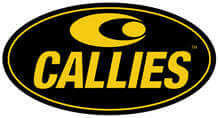
MS Access As A Dev Tool
Access continues to be a highly efficient tool for business database development.
The Best Microsoft Access Database Solutions owner, consultant, and principal programmer is Alison Balter - a recognized expert Microsoft Access consultant. Alison is the author of 15 Microsoft Access training books and 200+ training videos. She is a frequent guest speaker at MS Access conferences and has developed hundreds of applications for businesses of all types.
We know your business data is important; we listen to your concerns, ask questions, and gather information from all stake holders. We discuss your needs and requirements for your database. We find out what you want, why you need various features so we can obtain as much information as possible. Once we have the information we need, we work with you to design the proper database architecture, plus the dashboards, the questions (queries), forms, and reports you need for an excellent database system.

We also create websites designed for speed to display your data accurately, using ASP.NET technology. Fast, secure, and robust, our ASP.NET web sites and web applications give you true business tool for finding and displaying information dynamically on the web.






Access continues to be a highly efficient tool for business database development.

How to create a Microsoft Access application with some unique tips and tricks.

Your Access developer near me has some great info for you about using Access efficiently.
Call MS Access Solutions at (323) 285-0939 For Complimentary Consultation
Working with Table Properties
In addition to field properties, you can specify properties that apply to a table as a whole. To access the table properties, click the Property Sheet button on the ribbon while in a table's Design view. The available table properties are shown in Figure 2.22. The Description property is used mainly for documentation purposes. The Default View property designates the view in which the table appears when the user first opens it. The Validation Rule property specifies validations that must occur at a record level, instead of a field level. For example, credit limits might differ depending on what state a customer is in. In that case, what's entered in one field depends on the value in another field. When you enter a table-level validation rule, it doesn't matter in what order the user enters the data. A table-level validation rule ensures that the proper dependency between fields is enforced. The validation rule might look something like this: [State] In ("CA","NY") And [CreditLimit]<=2500 Or _ [State] In ("MA","AZ") And [CreditLimit]<=3500 Or _ [State] Not In ("CA", "NY", "MA", "AZ")This validation rule requires a credit limit of $2,500 or less for applicants in California and New York and a limit of $3,500 or less for applicants in Massachusetts and Arizona, but it doesn't specify a credit limit for residents of any other states. Table-level validation rules can't be in conflict with field-level validation rules.
The Validation Text property determines the message that appears when the user violates the validation rule. If this property is left blank, a default message appears.
You use the Filter property to indicate a subset of records that appear in a datasheet, form, or query. You use the Order By property to specify a default order for the records. The Filter and Order By properties aren't generally applied as properties of a table.
The Subdatasheet Name property identifies the name of a table used as a drill-down. If this property is set to Auto, the drill-down table is automatically detected based on relationships established in the database. The Link Child Fields and Link Master Fields properties are implemented to designate the fields that are used to link the current table with the table specified in the Subdatasheet Name property. These properties should be left blank when Auto is selected for the Subdatasheet Name. You use the Subdatasheet Height property to specify the maximum height of the subdatasheet and the Subdatasheet Expanded property to designate whether the subdatasheet is automatically displayed in an expanded state.
Access programmer cities we serve: Access Programmers San Jose California

